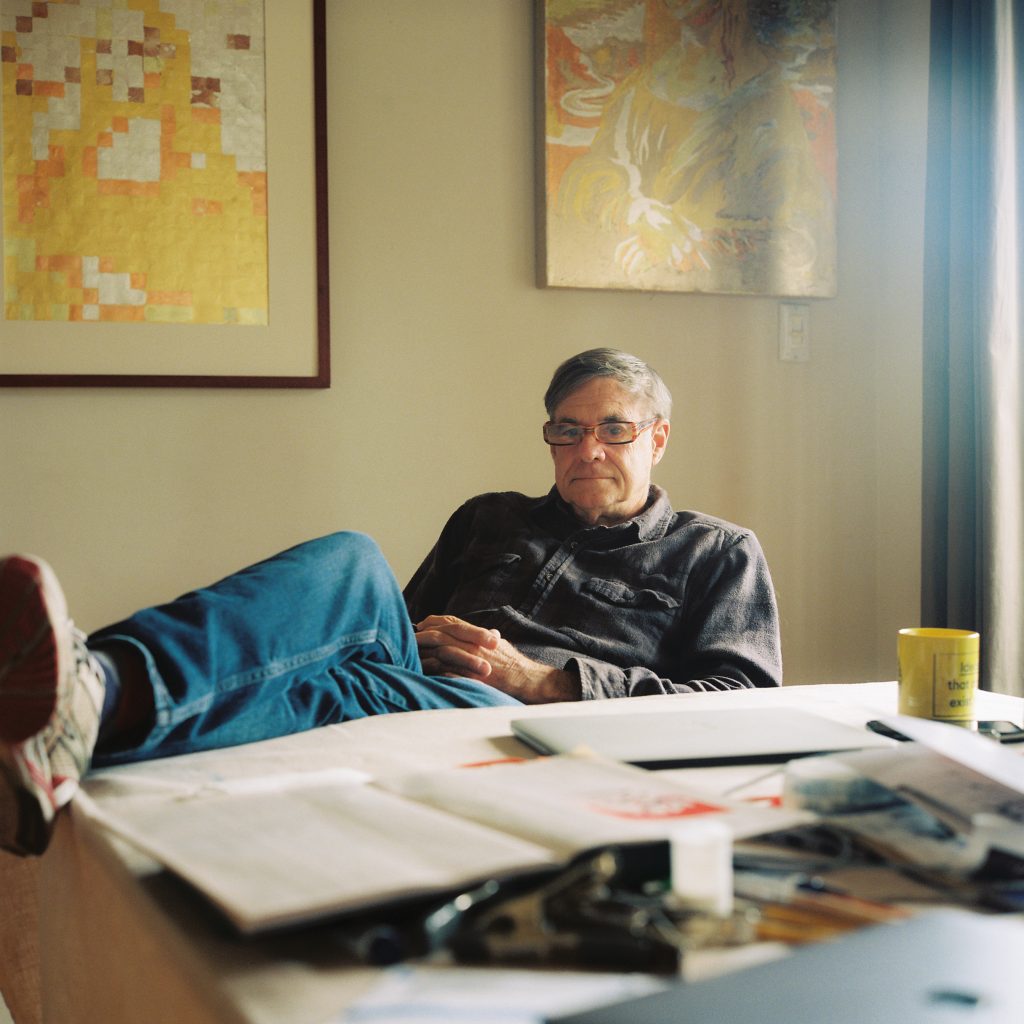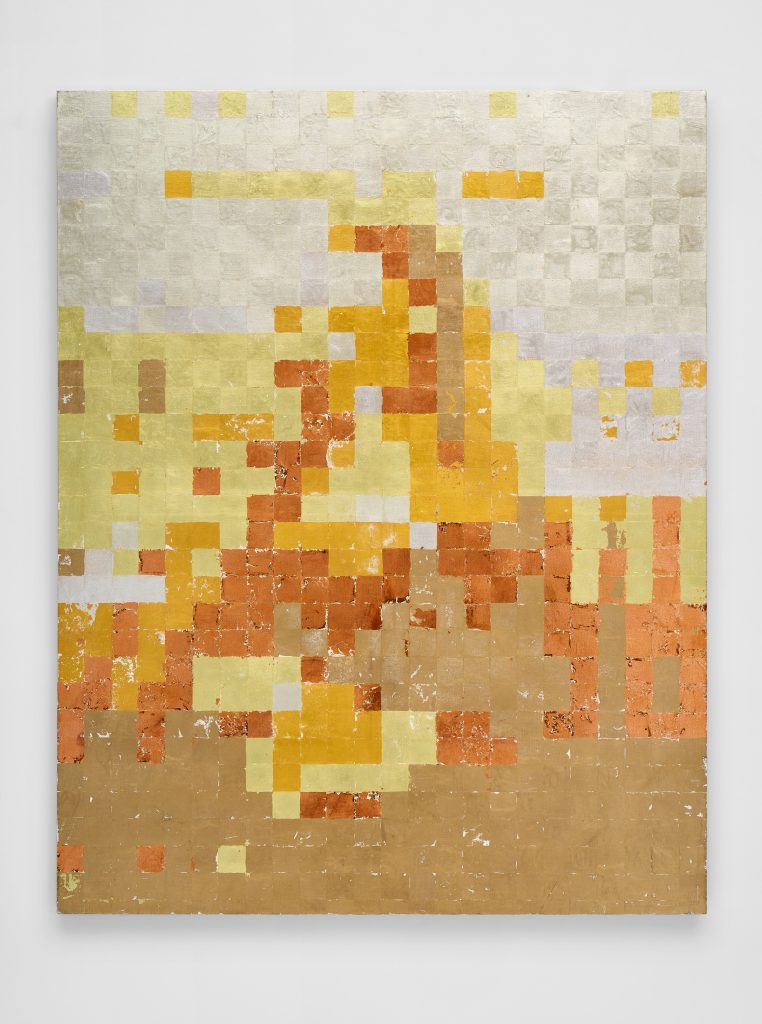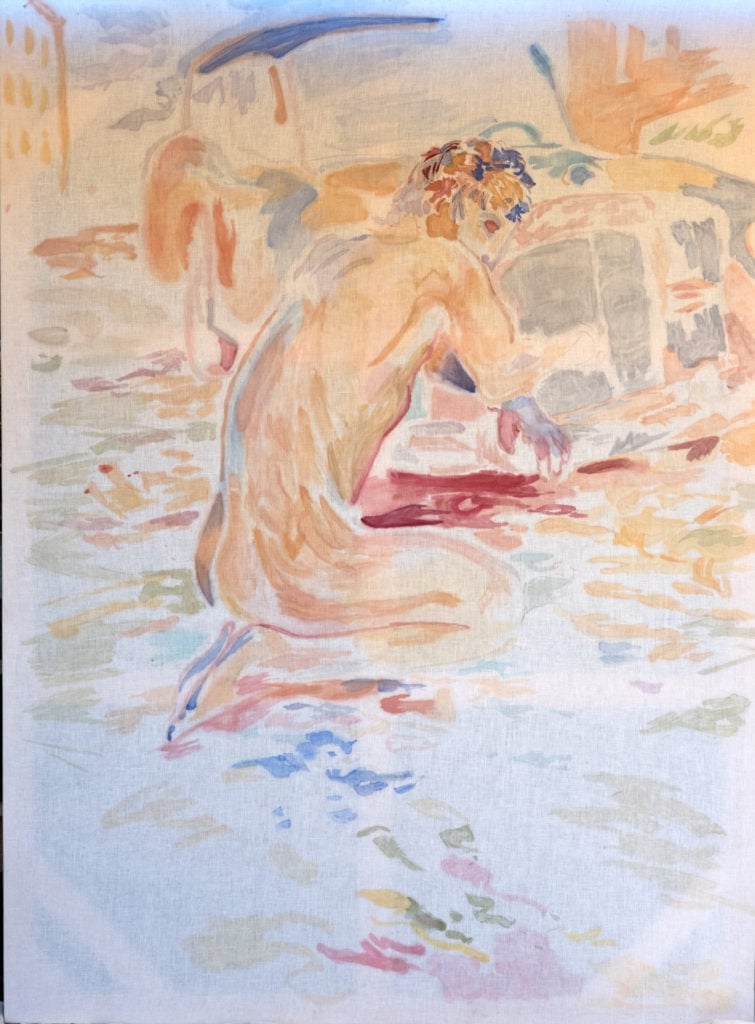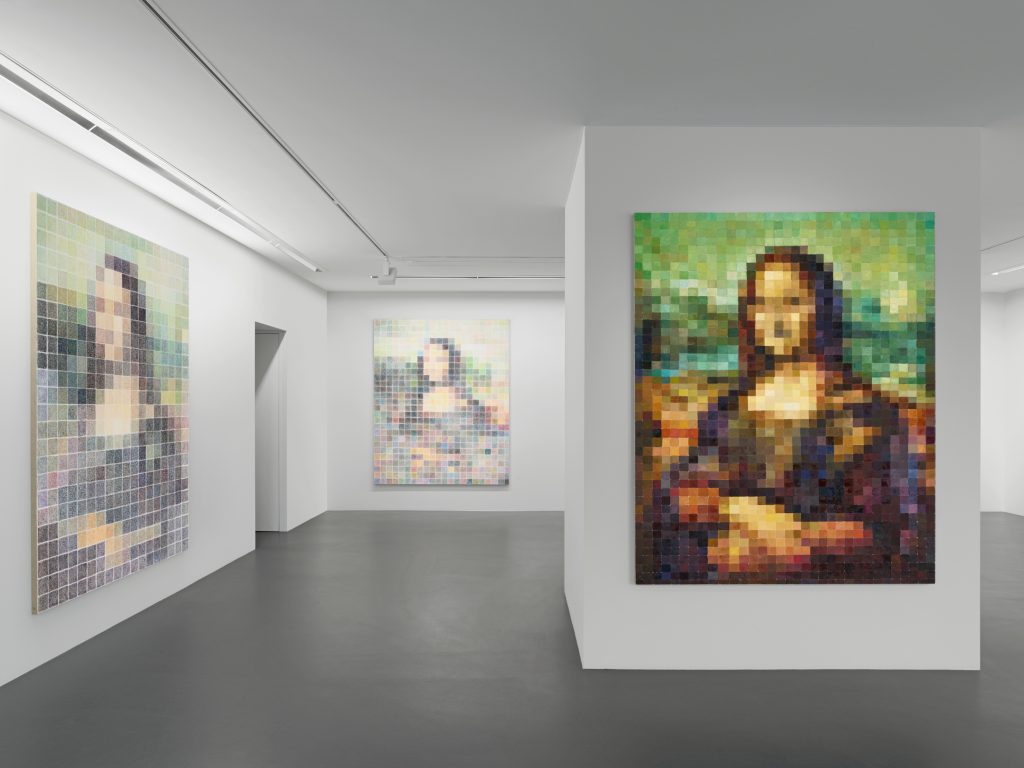People
Filmmaker Gus Van Sant First Saw the ‘Mona Lisa’ When He Was 11. Sixty Years Later, She’s the Inspiration for His Paintings
Van Sant is showing his new paintings at Vito Schnabel's gallery in Switzerland.

Van Sant is showing his new paintings at Vito Schnabel's gallery in Switzerland.

Osman Can Yerebakan

In 1963, an 11-year-old Gus Van Sant traveled from Connecticut to the Metropolitan Museum of Art with his painter grandmother to see the Mona Lisa on its tour to New York. They waited outside the museum in the bitter cold, then faced the pushy crowds to glimpse the famously small painting, After taking that quick glance, he understood why some people say life’s more about the journey than the destination.
Despite that underwhelming look at the Mona Lisa, the filmmaker is revisiting the painting six decades later in his own work. A series of new paintings dedicated to that pillar of Western art is now on view at Vito Schnabel’s gallery in St. Moritz, Switzerland (through February 19). Without crowds to obstruct his view, Van Sant has deconstructed the Mona Lisa’s iconic silhouette into pointillist squares, similar to pixels of a digital image.
“I am interested in the way computers operate on a multicolor pointillism instead of the typical four main colors in silk screen,” Van Sant tells Artnet News. “Eradicating a widely known figure helps me play with color without worrying about the familiarity of the subject matter.”
The idea to employ Leonardo da Vinci’s Renaissance masterpiece came to the artist via a Lego commercial in which the painting appeared divided into 400 different colors. The image reminded Van Sant of Salvador Dalí’s photomosaic lithograph Lincoln in Dalivision from 1976, “and how the pointillist aesthetic of computerized iconography is similarly made up of representative colored squares.”

Gus Van Sant, Mona Lisa Gold #1 (2021). ©️ Gus Van Sant; Photo by Flying Studio; Courtesy the artist and Vito Schnabel Gallery.
Van Sant limited his materials to gold, copper, and silver leaf, as well as oil and crayon. He considers each of the 12 paintings in the series “a different journey from concept to execution,” determined by the discrepancy between his hand and his printed-out reference.
“As much as I tried to stick to the print, the color combination of the squares determined the procession,” he said. “My references had set color spectrums, but once I painted, say, a medium green, yellow green followed, and then came just yellow.” The results vary in replicating the sitter’s unmistakable likeness, from immediately recognizable color juxtapositions with oil to rather pixelated abstractions in gold. This exercise—what he calls “sticking to the plan and not”—coincides with a shift to adopt technicolor aspects of filmmaking into painting.
Cinema, particularly the grubby and gilded glamour of Tinsel Town, served as the narrative inspiration for Van Sant’s previous exhibition with Vito Schnabel, in New York in 2019. Unlike the regimented geometry of the new works, those watercolors on linen loosely depicted an enlarged nude man roaming around Hollywood Boulevard. The alienation of the anonymous figure recalled some of the director’s iconic protagonists, such as Bob Hughes (played by Matt Dillon) in Drugstore Cowboy and Mike Waters (played by late River Phoenix) in My Own Private Idaho.
Van Sant was drawn to what he called the “freak show” nature of the Los Angeles street: “Stunt men dressed up as superheroes, mixed with tourists in front of the Chinese Theater, standing by homeless people.”

Gus Van Sant, Untitled (Hollywood 16) (2018-19). © Gus Van Sant. Courtesy of the artist and Vito Schnabel Projects.
While the hustling man set against glittered urban mayhem echoed Van Sant’s decades-long work behind the camera, his trajectory in fine art dates back to his teenage years. He cites his high school art teacher, Robert LaVign—“a dynamic and assertive gay man in 1960s Connecticut”—as his first artistic role model. After winning first prize in the annual art show of Darien High School for a painting of three policemen washed in gold leaf, he opened a gallery with a friend to sell their paintings, as well as LaVign’s, at age 16.
In 1970, Van Sant enrolled in the Rhode Island School of Design to double major in film and painting. Following the foundation year, however, a film department assistant warned him that if he wanted to succeed he would need to “eat, dream, and sleep film in the film department,” and he bid farewell to a formal training in painting.
In the 1970s, a time when disciplines mingled, Van Sant moved to New York, where he was exposed to both art and film at institutions like MoMA. He bought his first 8-millimeter camera at a store below the museum’s subway station. “At the time, mediums were not strictly defined and visual artists like Stan Brakhage were making films,” he said. He, too, would approach the reel like a kind of canvas, drawing or scraping over the film to shoot experimental shorts with friends.
Van Sant’s hands-on auteur approach to filmmaking and a run of successful films further overshadowed his

Installation view of Gus Van Sant: Mona Lisa, Vito Schnabel Gallery, St. Moritz, December 27, 2021 – February 19, 2022); artworks © Gus Van Sant; Photo by Stefan Altenburger; Courtesy the artist and Vito Schnabel Gallery.
For this return to painting, Van Sant transformed a barn into a studio and made eight watercolors of twinkish young men. “They were an extension of what I was doing in the ‘60s, with posers directly staring at the viewer in defined attires, like policemen in uniform or turn-of-the-century women with Victorian hats,” he said. Van Sant showed his paintings to Vito Schnabel at Barry Diller and Diane von Furstenberg’s Oscar party a few years ago, and, following a visit to his home studio, the dealer offered him a show at his gallery.
Now, his latest work extends even further back into his history, to another figure “staring directly at the viewer,” perhaps sparked by that childhood pilgrimage to the Mona Lisa so many decades ago.